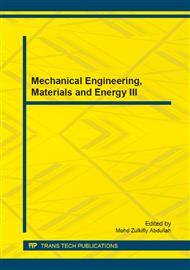p.88
p.92
p.96
p.100
p.105
p.110
p.115
p.119
p.124
Research on and Applications of Au/Pt Thermocouples
Abstract:
Elemental thermocouples are capable of meeting the demanding requirements of high temperature measurement with high accuracy, wide temperature measurement range, and long operational life. With an ever increasing need for more accurate, more precise temperature measuring devices over a wide spectrum of temperatures, elemental thermocouples show great promise when compared with its counterparts. The Au/Pt thermocouple, one of the more effective elemental metal combinations, is the ideal standard thermometer in the range of 0°C - 1000°C due to its reproducibility, accuracy, stability, and durability, causing the US and Korea to standardize its use. Much academic work has been done on the accuracy, stability, thermoelectric properties, structural design, and calibration methods of Au/Pt thermocouples to develop it to its current state. This paper summarizes research done on Au/Pt thermocouples, both domestically and internationally, in order to provide a foundation for future improvement.
Info:
Periodical:
Pages:
105-109
Citation:
Online since:
December 2013
Authors:
Price:
Сopyright:
© 2014 Trans Tech Publications Ltd. All Rights Reserved
Share:
Citation:


